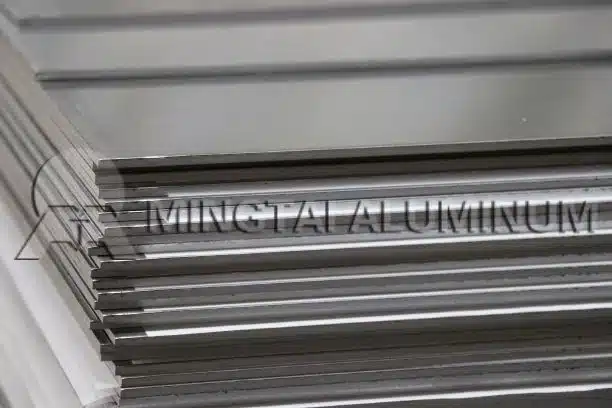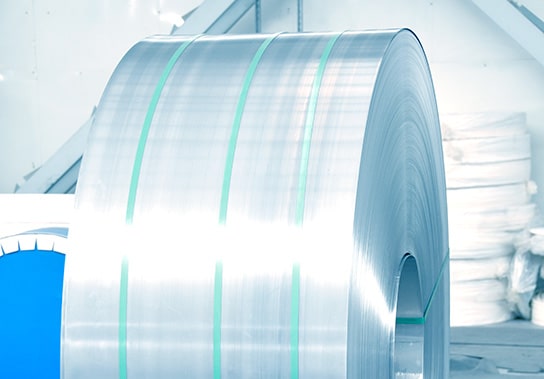
Ever walked past a plane and stared at that silver skin? Or leaned on a cold aluminum panel outside a station? Those smooth sheets don’t just happen. Making them takes fire, noise, patience, and a lot of metal sense. I’ve seen it enough times to know it’s equal parts science and habit.
This guide takes you inside the aluminum sheet manufacturing process step by step, showing how every aluminum sheet is shaped, rolled, and finished before it leaves the line. Seven main stages. Each one matters.
Step 1 Raw Material Preparation
It all begins with the ingot. Some factories melt new aluminum, others feed in scrap from earlier jobs. Most mix both—it’s cheaper and honestly you can’t tell the difference once it’s melted right.
While the metal’s liquid, operators tweak the recipe. A little magnesium for muscle, a touch of silicon to help it flow, maybe some copper for stiffness. Add too much and the stuff fights back in the rollers; too little and it folds like paper. You learn the sweet spot over years, not from a manual.
Inside the furnace, they blow argon through the melt to push out hydrogen bubbles. It makes a soft hiss, like soda fizz. When the surface goes mirror-still around 720 °C, that’s the sign it’s clean and ready. Aluminum behaves like that—quiet when it’s happy.
That clean melt becomes the starting point for every aluminum sheet we see later.
Step 2 Casting the Slab
Now the glowing soup turns solid. Two main routes: Direct Chill casting for thick slabs, or continuous casting for coils. DC casting looks dramatic—molten metal pouring into a mold, steam everywhere. If the water jets are too strong, the edges crack; too gentle, and the grains grow big and patchy. Old hands watch the frost line slide down to judge it.
Casting is the foundation of the aluminum sheet manufacturing process, turning molten metal into solid slabs that can be rolled and shaped.
Once the slab drops out, the top few millimeters are milled off—“scalped,” they call it—to get rid of oxides. Then it sits in a homogenizing furnace at roughly 500 °C for hours. That slow bake evens out stress before rolling starts.
Step 3 Hot Rolling
This part is loud. The slab goes through rollers taller than most people, glowing orange, hissing like a train brake. In minutes, its thickness falls from half a meter to maybe 6–10 mm.
Automatic gauge control helps, but seasoned operators still rely on the metal’s color. If it fades too grey, they speed up or raise the temp. Computers measure, humans judge.
Hot rolling marks the first real shaping stage of the aluminum sheet. At MINGTAI ALUMINUM, the big pride is a six-high cold mill from SMS in Germany. It handles sheets up to 2.65 m wide—basically car-door width—and keeps the stress balanced so the aluminum sheet doesn’t twist when cut. That width is rare; architects love it because it means fewer joints.

Step 4 Cold Rolling
Hot-rolled coil cools and then faces the next torture: cold rolling. Same idea, just at room temperature and through tighter gaps. Each pass thins it down—maybe to 0.2 mm if you’re making foil stock. You hear the rollers sing when the oil film is right. Too dry and you get faint scratches; too wet and the sheet slides unevenly.
Cold rolling refines the aluminum sheet’s surface and thickness. This part of the aluminum sheet manufacturing process improves strength while keeping precise gauge control.
Cold rolling also hardens the metal. Good for strength, bad for bending later, which is why the next step exists. You can feel it if you try to flex a piece straight off the line—it snaps back fast.
Step 5 Annealing and Heat Treatment
Think of this step as letting the metal breathe. Coils go into big furnaces glowing dull red. They heat slowly, soak, and cool under tight watch. The smell of hot oil hangs in the air.
Different cycles give different “tempers.” O-temper means soft and bendy. H-series are half-hard for transport panels. T-series get extra heat to handle real stress—like aircraft frames. You’ll see codes such as H14, H24, H32 on spec sheets; they’re basically shorthand for how the metal was treated.
When you run your hand over a freshly annealed aluminum sheet, it feels warmer, somehow calmer—less tension hiding inside.
Step 6 Surface Finishing
After that, it’s about looks and protection. Sheets might be brushed for texture, polished, or anodized. Some go through degreasing baths that smell faintly of vinegar. Others get PVDF coatings for outdoor use.
A well-finished aluminum sheet not only looks premium but also lasts longer in outdoor environments. Aluminum’s naturally shiny, almost too shiny sometimes. Polishing alone can make it look high-end. That’s why phone housings and air-conditioner covers use similar material—it takes a finish beautifully and stays that way.
Step 7 Cutting, Inspection, and Packaging
Finally comes the trimming and wrapping. Machines slit or cut the coils into ordered sizes. Inspectors check a few pieces from each batch—measure thickness, look for tiny dents or lines you’d miss unless light hits just right.
Then the sheets are stacked with paper or film between, sealed against humidity, and strapped to wooden pallets. Miss one corner wrap in a humid port, and you’ll find white rust a week later. Most shipping teams double-wrap in summer just to be safe.
MINGTAI ALUMINUM, one of China’s long-time producers, makes sheets, coils, and foils across all 1–8 series alloys. We ship every aluminum sheet globally—construction, transport, marine, you name it.

Conclusion From Molten Metal to Precision Sheet
Every coil you see started as a quiet pool of liquid metal. The process may sound routine, but it’s built on small instincts: the pitch of a roller, the hue of hot metal, the feel of clean aluminum under gloves. Machines handle the force; people handle the sense.
At MINGTAI ALUMINUM, the aluminum sheet manufacturing process runs daily under ISO-certified lines, producing aluminum sheet that blends precision and craft. That’s how the company keeps every piece uniform yet somehow alive—industrial, but with a craftsman’s fingerprint.
FAQs
Q: How is an aluminum sheet made from an ingot?
A: It’s melted, cleaned, cast into slabs, rolled thinner and thinner, heat-treated, and finished until it hits the target gauge.
Q: What’s the main difference between hot-rolled and cold-rolled aluminum sheets?
A: Hot-rolled is thicker and easier to bend; cold-rolled is thinner, harder, and smoother.
Q: Is aluminum endlessly recyclable?
A: Pretty much. You can melt it down over and over without real loss. Most mills reuse their own scrap daily.
Q: What makes up a full aluminum sheet production line?
A: Furnaces for melting, casting pits, big rolling mills, annealing ovens, surface finishing booths, and precision cutters at the end.




